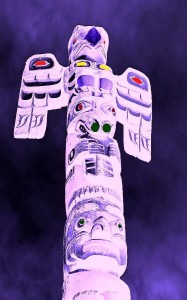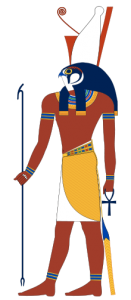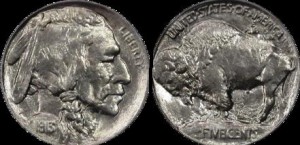Professional Animal Totemism—The Corporate Ladder as Totem Pole

They are so plentiful that it’s a virtual certainty that either the company you work for or some of the businesses you patronize will have an animal icon of some sort.
Take professional sports, for example—the Rams, Bears, Tigers, Bulls, Sharks, Dolphins, Panthers, Seahawks, Falcons, Bengals, Lions and the Grizzlies. With virtually infinite possible names, why do animal names dominate the rosters?
The Pro-Sports and Fortune 500 Menagerie
Then there are Fortune 500 and other big-biz corporate logos : the American Airlines eagle, the Hartford Financial elk, the John Deere buck, Jaguar’s jaguar, Ford’s mustang, the Lacoste alligator, the Ferrari stallion, Fido’s beagle, the Disney channel Mickey Mouse ears, Puma’s mountain lion, the Smirnoff double-eagle, Red Bull’s bulls, the Firefox fox, the Bacardi bat, the MGM lion, the Lamborghini bull, the Qantas kangaroo, the U.S. Post Office eagle and the Merrill Lynch bull, to name but a few.
Some of these animals are cute; others are fearsome. It’s speculative, but I think the reasons for the popularity and proliferation of both types is what can be described as primitive, yet psychologically persistent, “totemism”—the worship of a “clan” figure, often animal, which represents the clan by protecting it, who is simultaneously loved and feared, like a bear or dragon, and which, on rare—usually festive—occasions can be sacrificed by the clan, despite being very powerful.
For example, a member of a“ bear” clan would worship, fear and occasionally eat precisely the same kind of bear he identifies as his protector and whose claws dangle on his talisman necklace (which raises questions of how much protection can be provided by a totem that cannot reliably protect itself, like those devoured as beef burgers or spare ribs while devoted fans watch a Chicago Bulls game on TV).
What is to be argued next is the core claim that and explanation of why modern business and sports logos share many of these features and functions of totemism.
Freud, Totems and Mickey Mouse
According to Sigmund Freud, in his slim study, Totem and Taboo , published in 1913, among the most distinctive psychological features of any system of animal-worship totemism is deep “ambivalence”, i.e., strong and mixed feelings about the totem, e.g., love and hate, fear and desire (or hope, faith, etc.) or identification with the totem and safe distancing from it.
Rooting for the Tigers and reaching for a “Tony the Tiger”Frosted Flakes cereal box is one thing; encountering a tiger in the wild is altogether another. Love the icon, fear and avoid the real thing. Should the Detroit Tigers lose a World Series, sudden anger toward the Tigers team may add another layer of mixed-feelings to the already mixed emotions regarding them as revered and feared totemic tigers.
Freud speculates that the naturalness and persistence of totemism are related to the unconsciously perceived similarities between the animal totem and human objects of comparable, infantile love, fear, hate and awe—in particular, of the clan, tribe or family patriarch, i.e., of the father or “leader” figure, who not only wields power over all, but, in particular, over all females, their behavior and over the interaction of other males with them.
The Case of the Mouse God
Mickey Mouse, as hybrid of primitive and modern totemism, and as the top totem on the Disney corporate totem pole, is ambivalently worshipped (as a cartoon and merchandising icon) and hated (when it comes to resembling real mice). Mickey, like many ancient and primitive totems, is
- Half-animal, half-human (like many of the ancient Egyptian and Greek totemic gods)
- Worshipped and adored, yet (as a mouse per se) feared and despised (at least by girls and women, at both extremes shrieking in the presence of a mouse or The Mouse)
- Prominently displayed on the body (e.g.,, Mickey Mouse T-shirts as an analogue of a bear-claw necklace or a crucifix)
- Group protector
- Virtuous moral leader
- Not supposed to be harmed, but, in some real-world forms, may be killed, e.g., as a lab mouse.
This deification of Mickey Mouse is reinforced by eerie similarities to actual religious icons, e.g., Jesus: his mysterious asexual birth; his message for “children of all ages”; his having exactly 12 disciples—Minnie, Goofy, Pluto, Donald Duck, Henrietta Duck, Huey, Dewey, Louie, Grandpa Duck, Grandma Duck and nephews Morty and Ferdie; his being immortal and ageless; his being a chaste bachelor; his being symbolically housed in a very opulent cathedral-like edifice, viz., Disneyland; and his depiction in innumerable icons, e.g., as desk-top statuettes and on school lunch boxes.
Even Labor Unions and Ideologies
Other examples are readily cited: Even as representations of labor organizations and as service worker I.D., totemic animals abound. Among them are
- animal-based work patches and pins e.g., the Greyhound Bus safe-driver’s uniform patch (which features a stitched greyhound on a red, white and blue background)
- the pro-labor Fabian Society socialist tortoise emblem
- the eagle of the National Labor Relations Board
- the team of horses on the seal of the International Brotherhood of Teamsters
- the Fabian Window crest (commissioned by Fabian socialist and eugenicist, George Bernard Shaw) that features the image of a wolf in sheep’s clothing (!)
- the U.S. Post Office eagle
- “Fido” of the same-named cell-phone service
- the FedEx delivery dog.
It’s All about Dad, the Boss
Freud’s idea was that totems, including male gods, are basically projections of children’s (un)conscious emotions toward loved, feared and hated father figures. In his view, the ambivalence directed toward the totem, e.g., a bear or wolf, is displaced from the real father onto a symbolic animal figure, because it is safer to do that, rather than risk the wrath of a real dad, since real dads, even more than the gods they inspire (as ultimate bosses), can be both scary and comforting, mean and indulgent in a real-time, real-world, unmistakable way.
Such ambivalence toward totemic animals may have its counterpart and motivation in infantile attitudes toward father figures, but also in more mature attitudes toward one’s boss.
If ambivalence toward a boss is somehow experienced as shifted, more diffused, safer ambivalence toward work and the job, glimmerings of something like Freud’s totemic shift begin to emerge. The popular expression “working for the man” subtly resonates with such a shift of attitudes about the boss to the job.
It can further be argued, as Freud suggested, that the evolution of purely anthropomorphic religion is marked by a transitional totemic-animal stage, e.g., the half-human half-animal ancient Egyptian gods such as the falcon god Horus (right) and Sopek—depicted with a crocodile head, but otherwise human anatomy, which eventually culminated in modern totemic explicitly anthropomorphic, fully human father-figure deities.
Tongue in cheek, it could be claimed that the boss whose moods and demeanor match those of a riled grizzly is a modern counterpart of the totemic father-bear and Sopek.
Totemism at the Pinnacle of Labor Power and Pay
It is very interesting to note that the more strenuous the labor and the more exceptionally well-paid it is, the greater the likelihood of obvious animal-based totemism.
Take a close look at professional baseball, football, basketball and hockey league team names. What percentage of the teams are named after fearsome, yet somehow beloved, sometimes hated (when the teams lose miserably) animal icons? The example of football should suffice:
Rams, Lions, Colts, Seahawks, Jaguars, Broncos, Ravens, Bengals, Tigers, Dolphins, Eagles, Cardinals, Bills (Buffalo), Panthers—14 out of 24, i.e., almost 60%. Of course, then there are the Indian-themed teams, viz., the Redskins and the Chiefs—who, like the gods of Greek mythology, are human totemic clan-based symbols of legendary power and eternal dignity, historically respected and feared as much as any iconic figure on one of their totem poles.
Coincidental Animals?
Given that there is an infinity of possible names for teams, this narrow, indeed, funneled totemic outcome is truly astonishing in its incredible improbability as a chance phenomenon—suggesting that the pervasiveness of these must be attributed to something other than chance, utterly independent causes or a lack of imagination.
Yes, of course, teams want to project a powerful image, but why choose such lopsidedly animal images? Why not as many teams named after thundering waterfalls, raging wildfire or tornadoes, which are far more powerful than any animal?
Technology, even simple technology, also offers myriad alternatives: Why, instead, haven’t teams been named after home appliances or utensils, e.g., “The Pittsburgh Steamers”, “The Cleveland Rolling Pins” or “The Chicago Shovels”? The choice “animal” or “not-animal”, like “ace of spades” or “not ace of spades” in a 52-card deck, is not a 50-50 or even a 60-40 proposition that the actual percentages suggest, because “not” covers so many more possibilities—indeed, as in the case of alternatives to animals, infinitely more.
So, then why choose so many animals as the icons of the lumbering NFL, agile NBA and scooting American League laborers, if totemism is not the explanation and if the icons are not indeed totems? Sure, it’s about power and inspiring awe, if not dread. But, hasn’t anybody noticed that there are a lot of other powerful, awesome and dreadful things in this world, e.g., typhoons and tanks?
Randomly tossing around possible names for NFL teams and coming up with “some animal” is not at all comparable to the 50-50 odds on a coin toss of an old 1913 American nickel. That coin toss, unlike the infinitely large universe of possible team names, has only two possible outcomes.
The buffalo on the one side or the American Indian on the other. But why precisely those two outcomes—if neither is a totem?
And even if there are some other historical, symbolic or strategic reasons for such choices, e.g., the origins of the NHL teams’ names, is it not reasonable to conjecture that our totemic inclinations may have tipped the scales in favor of such totemic names and images?
If you think that all those animal names are merely historical, arbitrary or random coincidences, and can’t be convinced otherwise, may I recommend that you get a broader, more panoramic and timeless perspective….
….and climb a totem pole.



